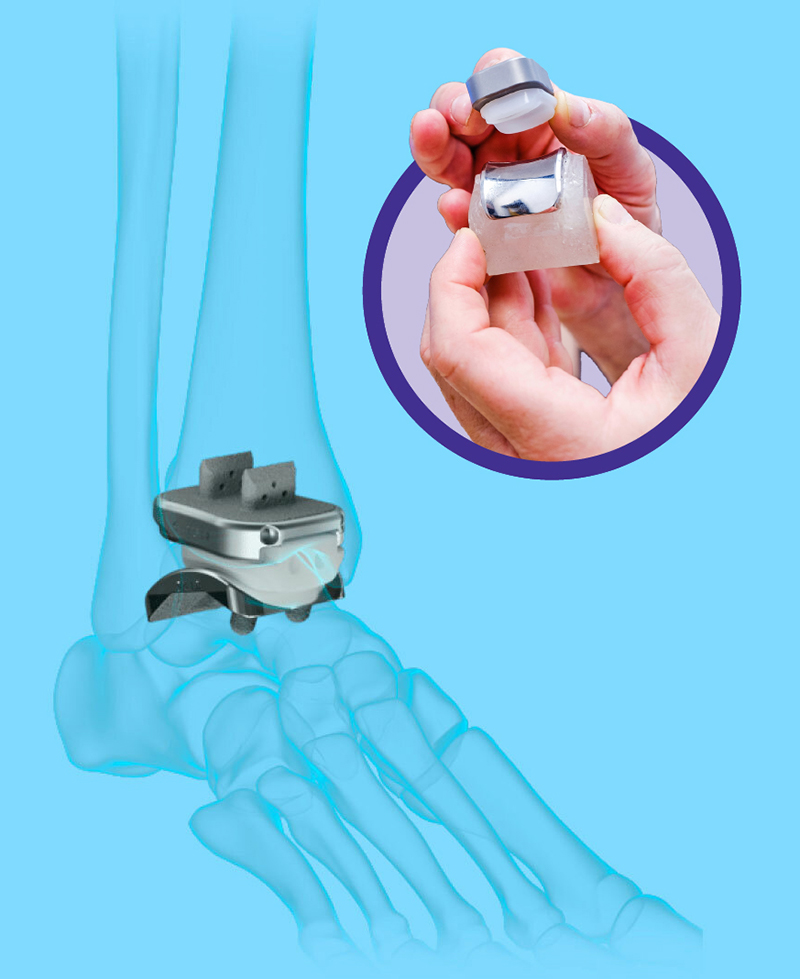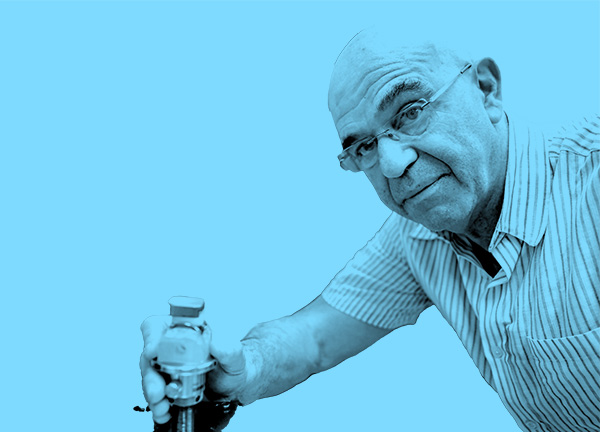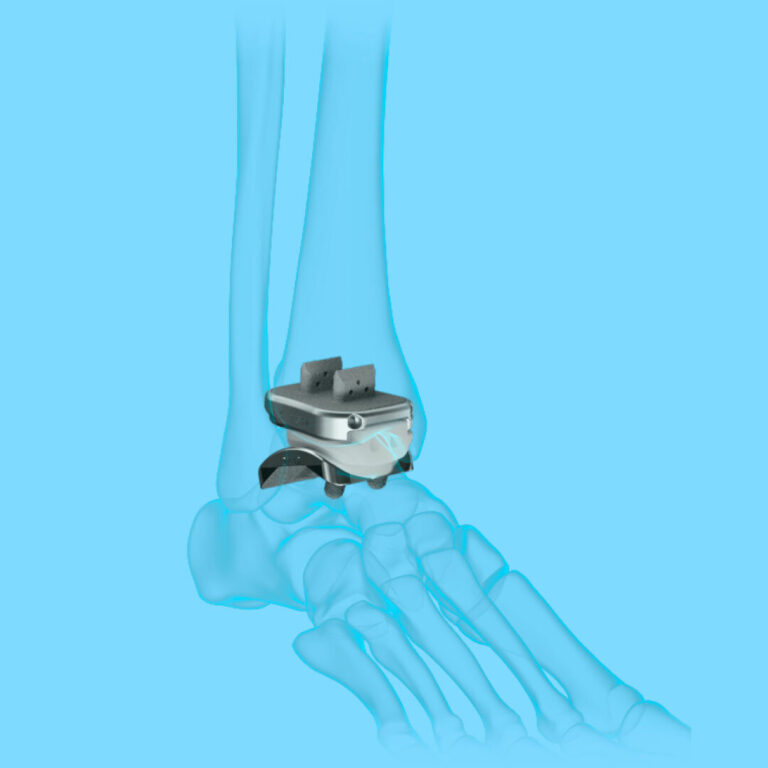
Kinos Axiom Total Ankle System
Kinos Medical, which earned FDA clearance for Siegler’s ankle replacement design, has merged with restor3d to create personalized implants.
In 2013, mechanical engineering Professor Sorin Siegler was studying the shape of ankle bones at the request of a medical device manufacturer, using MRIs and CT scans to create 3D renderings on a computer.
But when Siegler compared his renderings to illustrations in commonly used medical textbooks, he found two glaring discrepancies.
The textbook diagrams showed a talus bone shaped like a cone, the top of which faced the inside of the foot. Images Siegler obtained revealed the opposite: The top of the cone faced outward.
Siegler realized the medical community had been laboring under a second error: that the ankle joint is fixed, allowing movement along just one plane. This had been accepted as orthodoxy since the 1952 publication of “The Joints of the Ankle,” by influential University of California physician and researcher Verne Thompson Inman.
Taken together, Siegler’s twin discoveries went a long way toward explaining why ankle implants had been far less successful than hip and knee replacements.
For years, patients with arthritic or injured ankles had declined unreliable implants in favor of fusions that left them without the range of motion they’d once enjoyed.
The International Society of Biomechanics affirmed the power of Siegler’s work when it conferred the Clinical Biomechanics Award upon him and members of his team in 2013.
Others who took note included the Coulter-Drexel Translational Research Partnership, a Drexel tech commercialization program that provided seed funding and connected Siegler with Brian Garvey ’12, a former student and rising star in the medical device industry.

Sorin Siegler
Recognizing the promise in Siegler’s work, Garvey co-founded a startup, Kinos Medical, to develop an artificial ankle that preserves a patient’s full range of motion. The patent Siegler applied for in 2014 was granted in 2018. Two years later, the Kinos Axiom Total Ankle System secured FDA 510(k) clearance.
It didn’t take long for word to spread that the device could restore ankle joints. In 2021, Kinos merged with restor3d [sic], a leading North Carolina-based developer of personalized orthopedic solutions through its in-house 3D printing technologies.
Restor3d has since launched several new line extensions that allow surgeons to treat a larger population of patients with ankle arthritis.
“The Kinos Axiom Total Ankle System provides patients with motion that restores their natural function,” says surgeon J. Kent Ellington, who is medical director of the Foot and Ankle Institute at OrthoCarolina.
“This has been a huge advantage for them as they regain flexibility at the joint and can enjoy a more active lifestyle after ankle replacement.”


